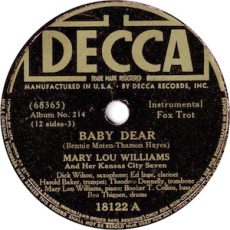
Daily Dose Of Jazz…
Booker Collins was born on June 21, 1914 in Roswell, New Mexico. Emerging from the New Mexico Military Institute to play in Bat Brown’s Band, a territory band. By the mid-’30s he was keeping very good company playing with pianist Mary Lou Williams and Her Kansas City Seven, cutting sides with her when he was only 16. In 1934, his break came when he got into the band of Andy Kirk and His Clouds Of Joy, staying for the next decade and playing alongside Williams in the rhythm section. Kirk’s hiring replaced the tuba with the double bass.
Booker’s final job of note was with Chicago, Illinois guitarist and drummer Floyd Smith as part of his trio, a stint that lasted from 1946 until the early ’50s, when this great bass man finally laid his big instrument down in terms of full-time playing. He made a few appearances at festival occasions in the ensuing decades but was in Chicago’s recording studios in the late ’50s cutting sides for independent labels.
Returning to performing he joined a combo called the Shades of Rhythm to backup blues singer Mad Man Jones on the demanding Come Here. Collins’ involvement with this group of shifting personnel began in 1952 when he was part of a version that took the risk of cutting sides for the Chance label.
He also performed and recorded with Bert Johnson and the group Six Men And A Girl. Little is known about the death of double bassist Booker Collins who also played the valve trombonist and tuba. It appears he faded into obscurity.
More Posts: bass,history,instrumental,jazz,music,trombone,tuba
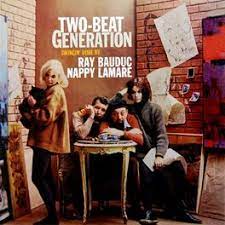
Daily Dose Of Jazz…
Ray Bauduc was born June 18, 1906 in New Orleans, Louisiana and was the son of cornetist Jules Bauduc, his older brother was a banjoist and bandleader, and his sister was a pianist. His youthful work in New Orleans included performing in the band of Johnny Bayersdorffer, and on radio broadcasts. His New Orleans origin instilled in him a love for two-beat drumming, which he retained when he played with Bob Crosby’s swing-era big band.
Moving to New York City in 1926 he joined Joe Venuti’s band. During the 1920s he recorded with the Original Memphis Five and the Scranton Sirens, which included Tommy and Jimmy Dorsey. His time with the Bob Crosby Orchestra brought him national fame and Bauduc and bassist Bob Haggart composed two hits for the orchestra, South Rampart Street Parade and Big Noise from Winnetka, which has become a jazz standard.
After his discharge from the Army in 1944, he and former Crosby group leader Gil Rodin formed a short-lived big band. He toured with a septet in 1946 and also worked in Tommy Dorsey’s orchestra for a couple of months that year. By 1947, he joined Bob Crosby’s new group, then left to play with Jimmy Dorsey where he stayed for the next two years. He freelanced on the West Coast for a couple of years before joining Jack Teagarden in 1952. In 1955, he formed a band with Nappy Lamare which found considerable success, touring nationally and recording several albums.
From 1960 Ray went into semi-retirement and relocatred to Bellaire, Texas but visited New Orleans in 1983. He appeared occasionally at Crosby Orchestra reunions, worked with Pud Brown on several recordings, and played with the Market Square Jazz Band headed by James Weiler in the early 1980s in Houston.
A trend setter in traditional jazz circles, his precise, disciplined, yet fiery patterns and syncopated fills, helped New Orleans drummers make the transition into swing from the rigid, clipped progressions that had defined the previous era. His use of woodblocks, cowbells, China cymbals, and tom-toms distinguished him from most drummers of the swing era, and made him one of the few white drummers to be influenced by Warren ‘Baby’ Dodds. Drummer Ray Bauduc, who authored two books on drumming, transitioned in Houston, Texas, on January 8, 1988.
More Posts: bandleader,drums,history,instrumental,jazz,music
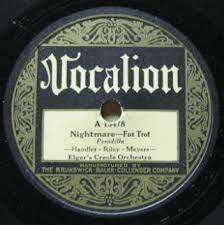
Daily Dose Of Jazz…
Charles Anthony Elgar was born on June 13, 1879 in New Orleans, Louisiana on June 13, 1879. From age 5 he played violin and also played trumpet. He studied music in Wisconsin and Illinois.
Elgar played in Chicago, Illinois from 1903 with the Bloom Theater Philharmonic Orchestra, but returned to his hometown late in the decade of the 1900s. He remained there until about 1913 when he returned to Chicago, putting together a band the same year. His band played at the Navy Pier Ballroom, Hattie Harmon’s Dreamland Ballroom from 1917 until 1922 and opened the old Savoy Ballroom in 1928.
With his band Charles toured in the revue Plantation Days and traveled to London, England though he did not accompany it on this trip. However, he did play with Will Marion Cook’s Orchestra in Europe. He went on to lead bands in Milwaukee, Wisconsin from 1925 to 1928, making several recordings with Elgars Creole Orchestra that he led at the Wisconsin Roof Gardens in Milwaukee and again in Chicago, 1926-30.
His sidemen included Manuel Perez, Lorenzo Tio, Louis Cottrell, Jr, Barney Bigard, Darnell Howard, and Omer Simeon. He made four recordings as leader of the Creole Orchestra. He concentrated on teaching in the 1930s, and worked as a union official later in his life. He was a founder and charter member of the local branch of the American Federation of Musicians, AFL-CIO, Local 2018.
Violinist, teacher and jazz bandleader Charles Elgar transitioned in August 1973 in Chicago.
More Posts: bandleader,educator,history,instrumental,jazz,music,violin
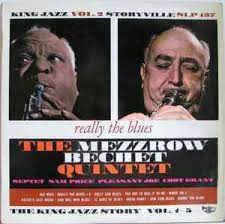
Daily Dose Of Jazz…
Joseph “Kaiser” Marshall was born on June 11, 1902 in Savannah, Georgia and was raised in Boston, Massachusetts. There he studied under George L. Stone, and played with Charlie Dixon before moving to New York City, New York in the early 1920s. After playing with violinist Shrimp Jones, he joined Fletcher Henderson’s band at the Club Alabam, remaining in Henderson’s retinue from 1922 until 1929.
He played with many noted jazz artists in the 1930s and 1940s, including Duke Ellington, Cab Calloway, Art Hodes, Wild Bill Davison, Sidney Bechet, Bunk Johnson, and Mezz Mezzrow. He also recorded with Louis Armstrong in the late 1920s, being the drummer on Armstrong’s 1929 recording of Knockin’ a Jug.
Between 1928-1930, he recorded with Benny Carter, Fats Waller and Coleman Hawkins in McKinney’s Cotton Pickers. Shortly after Kaiser recorded with the Four Bales of Hay, featuring Wingy Manone, Dickie Wells, Artie Shaw, Bud Freeman, Frank Victor, John Kirby and either Teddy Wilson or Jelly Roll Morton.
He went on to record as a member of the Mezzrow-Bechet Quintet featuring Sidney Bechet, Mezzrow, Fitz Weston, and Pops Foster. Drummer Kaiser Marshall transitioned on January 2, 1948 in New York City, New York.
More Posts: drums,history,instrumental,jazz,music
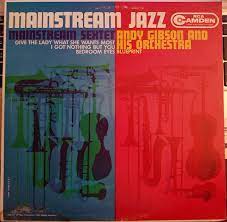
Daily Dose Of Jazz…
Prince Robinson was born in Portsmouth, Virginia on June 7, 1902. He learned to play clarinet as a teenager and after playing locally in Virginia, he moved to New York City, New York in 1923. Once settled Robinson quickly found work both performing and recording, with the Blue Rhythm Orchestra, June Clark, Duke Ellington, Billy Fowler, the Gulf Coast Seven, Fletcher Henderson, Lionel Howard, Clara Smith, and Elmer Snowden. He went on to tour South America with Leon Abbey’s group in 1927, and the following year became a member of McKinney’s Cotton Pickers.
The Thirties saw Prince working with Lil Armstrong, Willie Bryant, Blanche Calloway, Roy Eldridge, and Teddy Wilson accompanying Billie Holiday. His career continued in the 1940s, including work with Louis Armstrong, Lucky Millinder, and Benny Morton. In 1945 he joined Claude Hopkins’s band, remaining until 1952. Later in the decade he worked with Fletcher Henderson again and with Red Allen and Freddie Washington, in addition to leading his own ensemble in 1953.
His last recording was Mainstream Jazz by Andy Gibson and His Orchestra in 1959. He played a tenor saxophone solo on the theme Blueprint. Tenor saxophonist and clarinetist Prince Robinson transitioned on July 23, 1960 in New York City.
More Posts: bandleader,clarinet,history,instrumental,jazz,music,saxophone


